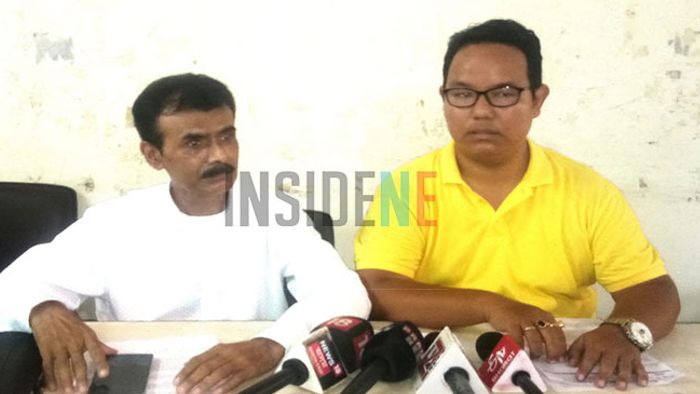Insurgency in Northeast an Obstacle to India's 'Act East Policy'?

- Nov 18, 2019,
- Updated Nov 18, 2019, 1:43 AM IST
Guwahati, November 18, 2019:
Despite the Indian Government's claims of developing Northeast India as a 'gateway to Southeast Asia' in Bangkok, the region is still problematic for a number of reasons -- thea chief among them insurgency.
In a recent incident, 5 Indian workers engaged in building the Kaladan road project in Myanmar were abducted by the Arakan Army (AA), an insurgent group in Myanmar, on the way from Paletwa in Chin state to Kyauktaw in Rakhine state of the neighbouring country. The incident took place on November 3.
This incident happened merely a day after the Prime Minister reiterated India’s oft-repeated Southeast Asia policy, originally conceptualized by erstwhile Prime Minister Narasimha Rao, in 1991.
According to the United Nations special rapporteur on the rights situation in Myanmar, over 60,000 people had been displaced since January till September this year across Rakhine and Chin states, which is an indication of the instability in the region.
Renewed fighting between the country’s armed forces, the Tatmadaw, and the Arakan Army, who are fighting for more autonomy for ethnic Rakhine Buddhists, is another cause for concern.
The Rakhine state has also been prominently in the news since 2017, when a brutal military crackdown forced over one million minority Rohingya Muslims to flee to Bangladesh.
Protracted insurgency in the area, particularly in Chin, which shares its border with Indian states of Manipur and Mizoram, has been constantly posing a threat to India’s Kaladan multi-modal transit transport project.
The multi-crore project, initiated in April 2008, is a vital cog in India’s Look East policy, which has been characteristically rechristened by the Modi government as Act East. The Kaladan project aims to provide the much-needed sea access to the landlocked Northeast by connecting Mizoram with the Sittwe Port in Rakhine.
Despite the Indian and Myanmarese armies coordinated operations, codenamed “Sunrise”, in February-March this year, it remains clear that the bordering area remains as troubled as ever.
Somewhat worryingly, insurgent groups from Northeast India have their operational bases in this region, through which India proposes to connect with Southeast Asian countries by road.
It may be mentioned here that the refusal of the National Socialist Council of Nagaland-Khaplang (NSCN-K) in June this year to sign the Nationwide Ceasefire Agreement (NCA), means the area would continue to remain volatile. The NSCN-K, however, signed a regional bilateral ceasefire with the Sagaing Region government on April 9, 2012.
Myanmar’s eastern border, connecting Laos and Thailand, too is infested with insurgent groups. In fact, barring the central plain inhabited largely by the country’s dominant ethnic group, Bamar (or Burmans), ethnic-insurgency is festering across Myanmar. There are at least nine ethnic insurgent groups active in the country and 15 others are in ceasefire agreement with the government.
Myanmar’s cross-border trade with its major trading partner China has almost been grounded since August this year after rebels carried out strategic attacks blowing up bridges on an important highway, connecting Mandalay and the border town of Muse.
The attacks were carried out by the Northern Alliance, comprising four ethnic insurgent groups — the Arakan Army, the Kachin Independence Army, the Myanmar National Democratic Alliance Army and the Ta’ang National Liberation Army.
Even on the Indian side, peace is still a far cry in Northeast. Four days after the Prime Minister’s announcement, an improvised explosive device went off at the heart of Imphal, the capital town of Manipur. Five policemen and one civilian were injured in the blast.
The ongoing internal conflicts on either sides of the border is one of the reasons for India’s aim of economic integration with Southeast Asia via Northeast virtually remaining in a stillborn state, even 28 years after the idea was first conceived.
The law-and-order situation, however, is not the only challenge to the idea, driven more by the political push than economic forethought.
The proposed under-construction 1,360-km-long India-Myanmar-Thailand Trilateral Highway that will connect Moreh in India to Mae Sot in Thailand via Myanmar, can be accessed only through geologically young mountainous terrain with fragile substrates.
To add to the complication, the heavy monsoon rainfall makes most of the area in the vicinity of the road project more prone to landslides.
Considering these challenges, does it not make more sense to try and connect Northeast India to the outside world through the waterways of Bangladesh?
In this regard, the much-awaited standard operating procedure (SOP) Bangladesh agreed with India last month to allow the use of its Chattogram and Mongla ports for movement of goods to and from India, will help unlock the landlocked Northeast to a large extent.
For Northeast to fully exploit its latent potentials, it will, however, require a greater engagement with Bangladesh, the second fastest growing economy in south Asia after Bhutan.
With inputs taken from thefederal.com
Support Inside Northeast (InsideNE), an independent media platform that focuses on Citizen-centric stories from Northeast India that are surprising, inspiring, cinematic and emotionally relevant.
Readers like you make Inside Northeast’s work possible.
To support our brand of fearless and investigative journalism, support us HERE.
Download:
The Inside Northeast app HERE for News, Views, and Reviews from Northeast India.
Do keep following us for news on-the-go. We deliver the Northeast